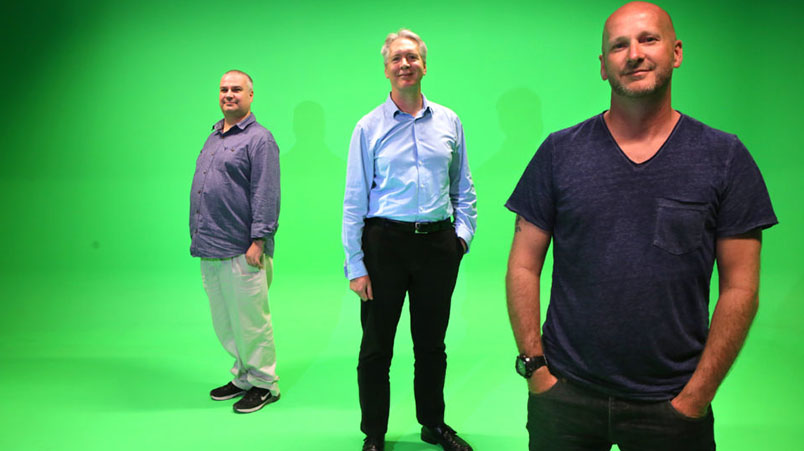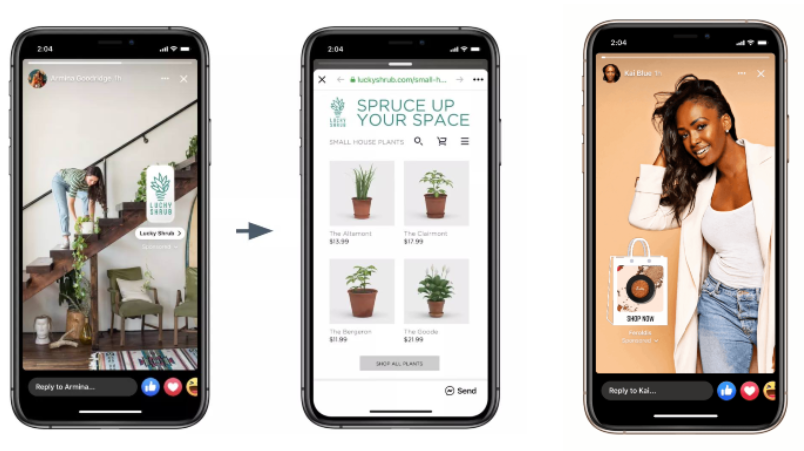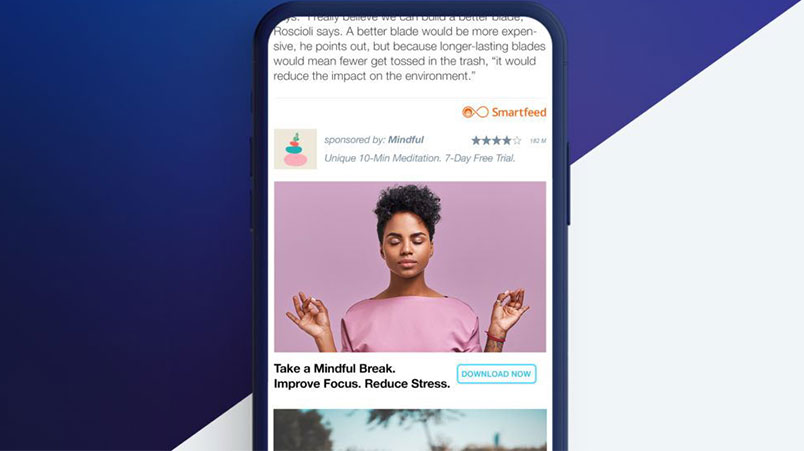Giant Oovvuu deal with Salesforce-backed WordPress takes on YouTube, FB, BVOD, with video ads for third of Open Web

Oovvuu founders (l-r) Greg Moore, Ross McCreath and Ricky Sutton: "The video market is already $52 billion but just 7% of articles feature video," says Sutton
With $300m in backing from Salesforce Ventures last year, WordPress, which powers 60 million websites worldwide and one-third of the Open Web, inked a deal with Australian mediatech start-up Oovvuu to provide news video for text publishers to compete and monetise at the scale of YouTube and Facebook. Will this one work as a revenue lifeline for publishers crunched by the duopoly?
Oovvuu co-founder Ricky Sutton is unashamedly batting for publishers in their do-or-die battle to survive the decimation in advertising raids ongoing from Google and Facebook. He says publishers can increase the value of any article 13 times if they embed video - and pre-roll video ads - into their text-based content.
Oovvuu's global media partners include Reuters, Bloomberg, Tech Crunch and The Associated Press but last week it cracked one of its biggest deals yet in which the AI-fuelled start-up will have its service embedded into WordPress VIP, allowing publishers and journalists to contextually match news video with text-based stories across 36 billion publisher pages worldwide.
"Two thirds of all news articles published in the world are published on WordPress," he says. "It gives us instant access to the zeitgeist and if our mission is to put a relevant video in every article, we have to know what every article is about. WordPress knows that."
Sutton's economic arguments are compelling enough - he says there are 27 million news URLs created every day but classic display advertising, or banner style ads, is worth about "three-quarters of a cent" per page view to publishers. "The right video in the right position might generate four or five cents per page. If every publisher put a video in every page view, their earnings would be completely transformed."
WordPress, whose parent company Automattic secured a $300m investment from Salesforce Ventures in late 2019, delivered 36 billion pageviews last year. Sutton says publisher pages which have contextual video embedded with their stories convert to video views at an average rate of 7%. "Basically it means any publisher in the world can increase the value of seven per cent of its inventory 13 times. That's basically the story," says Sutton. You might need to ponder those numbers but Sutton's shortcut says it allows crunched text publishers to play at scale in the digital video advertising market.
The Facebook, YouTube, BVOD challenge
Currently in Australia, Facebook's cost to reach a thousand viewers (CPM) via video ads is $5-$8; YouTube $15-25 at the more premium end of its inventory and broadcaster video on demand (BVOD) $25-$60. Video ads embedded in text articles carries an $8-$12 CPM according to some media buyers but demand is challenged in this market because of the fierce battle underway between YouTube, Facebook and broadcasters. Moreover, connected TVs are on the rise, opening up another way for advertisers to tap the online video market.
So what's the early market reaction to the Oovvuu-WordPress deal? Seven West Media is already using Oovvuu and Nine is understood to have opened discussions off the back of last week's announcement.
The Guardian's Australian managing director Dan Stinton is a fan of Oovvuu and the revenue upside it could bring but won't be tapping the service here. "We use very little syndicated content and prefer to produce our own video, so this is not likely to be something we would consider," says Stinton, who did work with Oovvuu in a previous tenure at Seven West Media. "The potential monetisation upside is real, but it's important to remember that not all publishers have the same audience or video strategy, so it really depends on how publishers execute on any relationship with Oovuu.
"At The Guardian, video is important as a storytelling mechanism but the vast majority of our content is consumed in text format, and increasingly audio. We only run video on stories that benefit from the addition of video and have very high production standards, which is why we only use our own content. So it's not as simple as inserting a video on every article page view. When I was at Seven, however, we spoke publicly about our video first strategy for news, which meant that we wanted a video in as many articles as possible. Given Oovvuu's massive range of content, they certainly helped match third-party video clips with text articles where there wasn't an equivalent 7 News video clip."
The Guardian: ad-supported publishers need video
Stinton says if publishers are "entirely ad supported", there is little hope of surviving without substantial video inventory. "Oovvuu has the potential to aggregate publisher inventory in a way that could provide enough scale to make it interesting to advertisers, but obviously it has a long way to go. The deal with Wordpress has significant potential but its success will ultimately come down to the discoverability of Oovvuu's content library and story matching capabilities of Oovvuu's tech. Not all Wordpress publishers are the same, so this needs to capture the cohort that have both large audiences and a prioritisation of video in their srategy. Oovvuu's tech needs to be up to task of making it easy for publishers to match their text based page views with Oovvuu's video library."
Sutton says Oovvuu started out with IBM's Watson AI but has since developed more of it's own tech to address the tech challenge Stinton speaks of.
Omnicom Media Group unfussed
On the buy side, Omnicom Media Group's chief investment officer Kristiaan Kroon "applauds" the intent to improve publisher economics but does not think it will make significant in-roads in the Australian market. "The reason for that is digital video is dominated by broadcaster video, YouTube and Facebook," he says. "They offer an extremely good advertiser experience, they can be contextually targeted, data can be overlayed and that has a very high barrier for traditional publishers. If anything, that marketplace has become even harder due to the growth of BVOD in Australia."
Still, Sutton argues there is enormous global - and Australian - growth opportunities, citing a TechCrunch report on the $300m investment from Salesforce: "It's not hard to see why Salesforce would invest such a gargantuan sum. WordPress currently powers one-third of the web," TechCrunch said at the time of the funding announcement last year. Indeed, there are bigger forces at play as Salesforce invests deep and wide through the sales, marketing, advertising, service and customer experience supply chain.
"We think we've got an internet but we've got two," Sutton says. "We've got Google's internet, we've got Facebook's internet but that's not the internet we signed up for. The article pages of publishers is of such massive scale globally, it's also an internet but everyone's forgotten about it. The page view internet is controlled by WordPress. Less than 10% of articles have video in them - we have to get that fill rate up and this deal means we can give thousands of publishers worldwide the ability to embed the video they need in one click. It massively simplifies the process."







